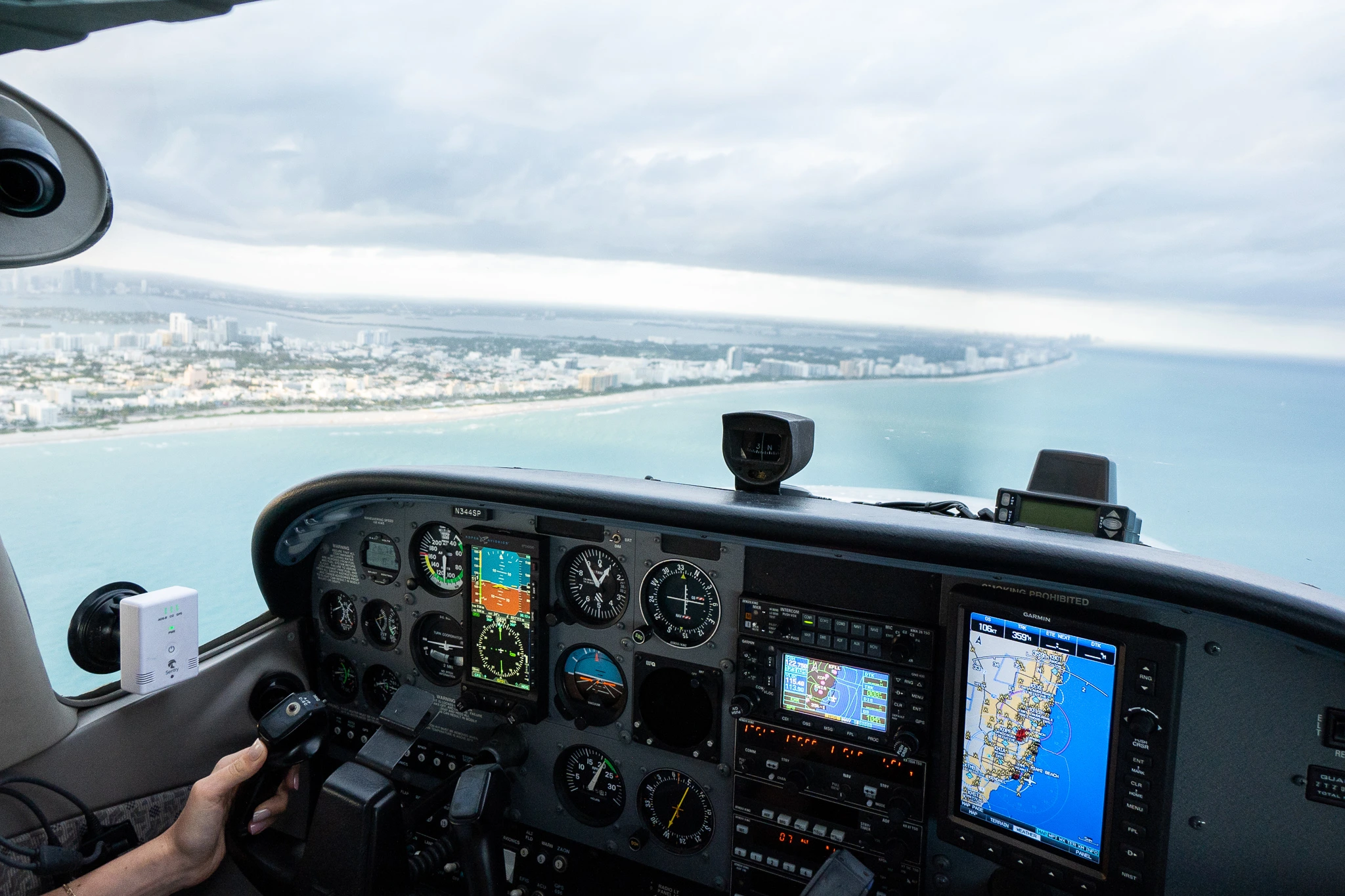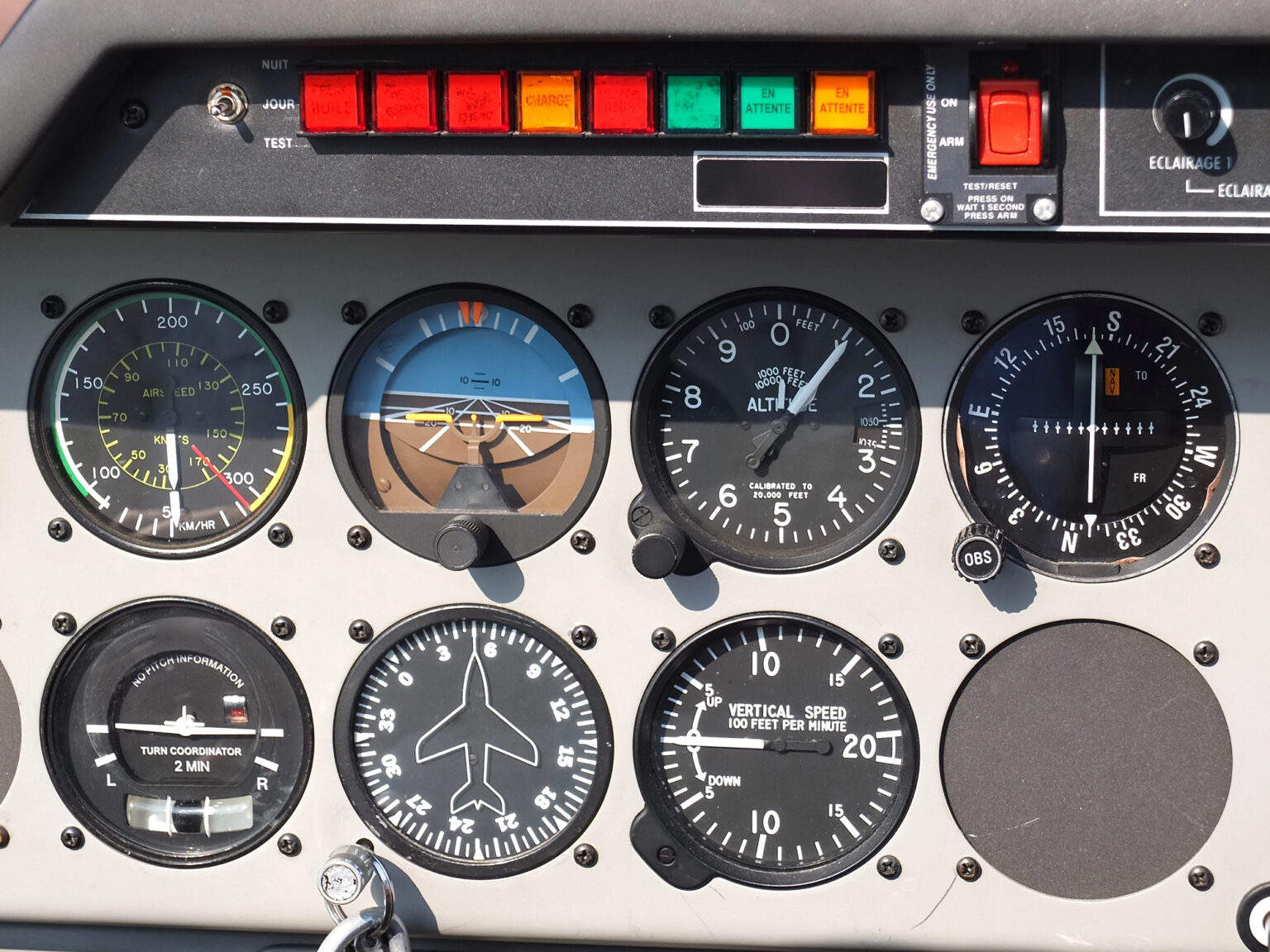
Breaking Down an Instrument Panel
At first sight, the instrument panel of even the smallest airplane can be an overwhelming sight. An array of gauges, dials, knobs, and digital displays can intimidate the uninitiated. However, it's comforting to note that most of the instruments found in training aircraft are surprisingly user-friendly. With time and practice, understanding these instruments becomes second nature.
The most important instrument in the initial training phase is the big transparent one over the glareshield, or dashboard if you will. This is the windshield, and it is the primary flight instrument for visual flight rules (VFR) flight. In VFR conditions, the airplane's instruments are used as references rather than a reliance on maintaining proper flight attitude. This means that in clear weather, a pilot primarily uses visual cues outside the airplane to maintain orientation and control.
When the weather gets bad and the windshield becomes opaque with clouds, we rely solely on the information that the instruments provide. This is to maintain the proper flight attitude and desired course to get us to our destination. Hence, the importance of instrument proficiency cannot be overstated.

A view of the instrument panel from a Sun City aircraft
Let's take a detailed look at the cockpit layout of a typical trainer. The center column in a Cessna 172, for example, has the fuel selector valve at the bottom just above the floor, the elevator trim wheel halfway up, and the power controls (throttle and mixture) at the top of the center column near the pilot's right knee. Unlike the car, the throttle is operated with your hand, and ground steering is performed by your feet. Taxiing an airplane is a little awkward at first but comes easily with time.
Above the power controls, in the center of the panel, is the radio stack. This is where the communications (com) radio and the navigation (nav) radio are located. In basic trainers, there is generally one of each. In aircraft equipped for IFR (instrument flight rules, which means able to fly in the clouds we just mentioned) flight, there are generally two com and two nav radios as well as a host of other navigational equipment.

The basic instrument panel
Directly in front of the pilot are the flight instruments. There are six principal instruments: the altimeter, directional gyro or heading indicator, attitude indicator, vertical speed indicator, turn coordinator, and airspeed indicator.
These instruments ensure that the airplane is at the desired pitch and bank whether it be a descending, left turn, or just straight-and-level flight. These instruments are so important that they are found in virtually every powered aircraft, from the smallest trainer to the space shuttle.
Let's elaborate on these instruments:
- The attitude indicator, or artificial horizon, displays your flight attitude, or what you should see out the windshield if the weather were to allow it. It has blue shading on the top, depicting an artificial sky, and a black or brown bottom, representing the ground. In between is the horizon bar. A fixed miniature airplane lies in the middle of the instrument, giving the pilot a tail view of what the airplane's attitude is.
- The altimeter lies to the right of the attitude indicator. The altimeter is user-friendly even to the newcomer. It reads just like a clock; the big hand marks hundreds of feet, and the little hand marks thousands of feet.
- The vertical speed indicator (VSI) is underneath the altimeter. It tells the pilot what rate the airplane is climbing or descending in feet per minute (fpm).
- The directional gyro (DG), often called the heading indicator, lies to the left of the VSI, and under the attitude indicator. This instrument simply tells us what our heading is.
Understanding your instrument panel is a crucial part of pilot training. It's your direct link to the aircraft and provides key information that enables you to pilot the aircraft safely and efficiently. With practice, you'll find that interpreting the instrument panel becomes an instinctive part of your flying skills.
At Sun City, we provide specialized instruction to help wrap your head around all these bells and whistles. Come visit us at the North Perry Airport (KHWO) in Hollywood, Florida, today.
Ready To Become A Private Pilot?
At Sun City Aviation Academy, we are dedicated to training you into a capable, adaptable, proficient, and safe pilot.
What's Next?
SCHEDULE A TIME TO TALK TO OUR TEAM
Let's meet and see how we can help you achieve your aviation goals. Learn more about what it takes to become a pilot. Click the big red button to schedule a time to speak with one of our team members.
 SCHEDULE A VISIT
SCHEDULE A VISIT
Join the Sun City family.
Like and follow us on social media.